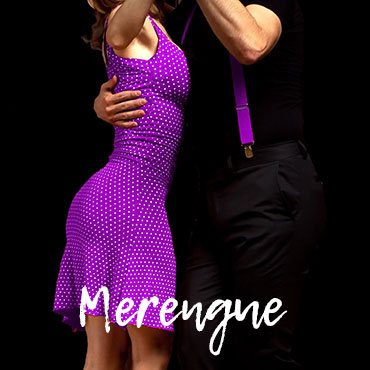Much of the history of the Merengue is surrounded by speculation and folklore. The dance originated in the Dominican Republic, but its exact timing is unknown. Some think it began in the early 20th century, yet its music has been around since the 1800s. Regardless of its timing, the dance was originally rejected by Dominican elites. It wasn’t until the reign of Dictator Rafael Trujillo, from 1930 to 1961, that the dance received widespread acceptance and popularity.
When to Dance the Merengue
In its original form, the Merengue is a very relaxed, simple dance. The versions often danced in nightclubs and ballrooms, though, are much more complex and require more precision. With an open or close embrace, it’s an excellent partner dance for any venue.
Interesting Facts
- The music has strong African roots and shares a lot with Haiti’s Mereng music.
- Some people believe that one of the dance movements was inspired by a pirate who had a wooden right leg and would dance on the beach.
- Another story says that the movement was inspired by slaves who were chained together and forced to drag one leg while cutting sugar.


